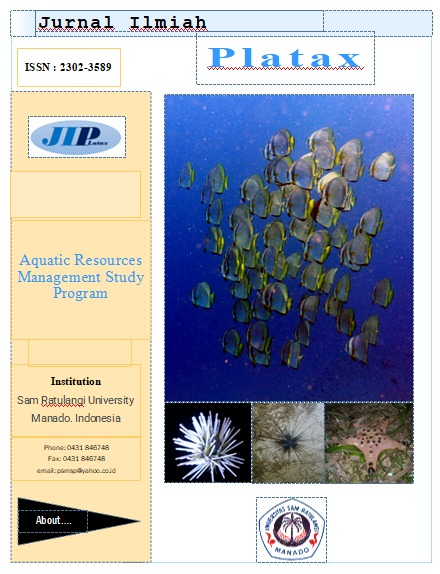The Relationship Of Clean Water And Environmental Sanitation To The Incident Of Diarrhea: Systematic Review
DOI:
https://doi.org/10.35800/jip.v12i1.53194Keywords:
Environmental Sanitation, Diarrhea, Toddlers, Systematic ReviewAbstract
Indonesia is one of the developing countries that experiences diarrhea problems. This is because of its high morbidity and mortality. Diarrhea is an endemic disease that has the potential to cause Extraordinary Events (KLB) which are often accompanied by death in Indonesia. Most diarrheal diseases can be prevented through safe drinking water and adequate sanitation and hygiene. This study aims to determine the relationship between environmental sanitation and the incidence of diarrhea in toddlers. This research uses a systematic review method (Systematic Review) which is a research method for identifying, evaluating, and interpreting research results that are relevant to a particular research topic, or phenomenon that is the focus of the research. The results of this research show that there is a relationship between environmental sanitation such as the physical quality of water, ownership of a toilet, type of floor in the house, and the incidence of diarrhea. It is hoped that after this research is carried out, mothers and health policy stakeholders such as the health department and community health centers can improve residential environmental health programs to have physically clean water quality and good environmental sanitation.
Keywords: Environmental Sanitation, Diarrhea, Toddlers, Systematic Review
References
REFERENCES
Dharmayanti, Ika, and Dwi Hapsari Tjandrarini. "The role of the environment and individuals in the diarrhea problem on the islands of Java and Bali." Journal of health ecology 19.2 (2020): 84-93.
Freya, Wa Ode Rona, and Madania Agusta. "The Relationship between Clean Water and Environmental Sanitation and Extraordinary Diarrhea Events." Endurance Journal 7.3 (2022): 615-626.
Hamijah, Siti. "The Relationship between Environmental Sanitation and the Incidence of Diarrhea in Toddlers." JOURNAL OF TRANSFORMATION OF MANDALIKA (JTM) e-ISSN 2745-5882 p-ISSN 2962-2956 2.3 (2021): 29-35.
I ryanto, AA, Joko, T., & Raharjo, M. (2021). Literature Review: Risk Factors for Diarrhea in Toddlers in Indonesia. Journal of Environmental Health, 11(1), 1–7
Kitchenham, B. (2004). Procedures for Performing Systematic Reviews . Keele University. https://www.inf.ufsc.br/~aldo.vw/kitchenham.pdf
Kosasih, Annastasia Luthfi, and Diah Indiani. "Determinants of Ownership of Healthy Latrines in Banten (2017 SDKI Data Analysis) Determinants of Ownership of Healthy Latrines in Banten (Data Analysis from 2017 SDKI)." (2022).
Kurniawan, Rama Nur, Ivan Wijaya, and Ahmad Yani. "Social Construction of Adolescent Online Game Addicts in Makassar City." Indonesian Health Promotion Publication Media (MPPKI) 4.1 (2021): 110-115.
Liberati, A., Altman, D.G., Tetzlaff, J., Mulrow, C., Gøtzsche, P.C., Ioannidis, J.P.A., Clarke, M., Devereaux, P.J., Kleijnen, J., & Moher, D. (2009). The PRISMA Statement for Reporting Systematic Reviews and Meta-Analyses of Studies That Evaluate Health Care Interventions: Explanation and Elaboration. PLoS Medicine , 6 (7). https://doi.org/10.1371/journal.pmed.1000100
Savitri, Anggie Al-Qarana, and Susilawati Susilawati. "Literature Review: The Relationship between Environmental Sanitation and the Incidence of Diarrhea in Toddlers." FLORONA: Health Scientific Journal 1.2 (2022): 72-77.
Saleh, M., and LH Rachim. "Relationship between environmental sanitation conditions and the incidence of diarrhea in the working area of the Baranti Health Center, Sidrap Regency in 2013." Health Journal Vol: VII No. 1 (2014).
WHO. ( 2018). Indicators for Improvement of Children's Environmental Health. Jakarta: EGC.
Wicaksono, Dimas Pratama. THE RELATIONSHIP OF ENVIRONMENTAL SANITATION AND MOTHER'S KNOWLEDGE TOWARDS THE INCIDENCE OF DIARRHEA DISEASE IN CHILDREN TODDLERS IN THE WORKING AREA OF THE MATARAMAN HEALTH CENTER, BANJAR DISTRICT, 2022 . Diss. Kalimantan Islamic University MAB, 2022.
Downloads
Published
How to Cite
Issue
Section
License
Copyright (c) 2023 Dewi Rahmadani Siregar, Abdul Razak, Elsa Yuniarti, Linda Handayuni

This work is licensed under a Creative Commons Attribution-NonCommercial 4.0 International License.
COPYRIGHT
Authors who publish with this journal agree to the following terms:
Authors hold their copyright and grant this journal the privilege of first publication, with the work simultaneously licensed under a Creative Commons Attribution License that permits others to impart the work with an acknowledgment of the work's origin and initial publication by this journal.
Authors can enter into separate or additional contractual arrangements for the non-exclusive distribution of the journal's published version of the work (for example, post it to an institutional repository or publish it in a book), with an acknowledgment of its underlying publication in this journal.
Authors are permitted and encouraged to post their work online (for example, in institutional repositories or on their website) as it can lead to productive exchanges, as well as earlier and greater citation of the published work (See The Effect of Open Access).




















